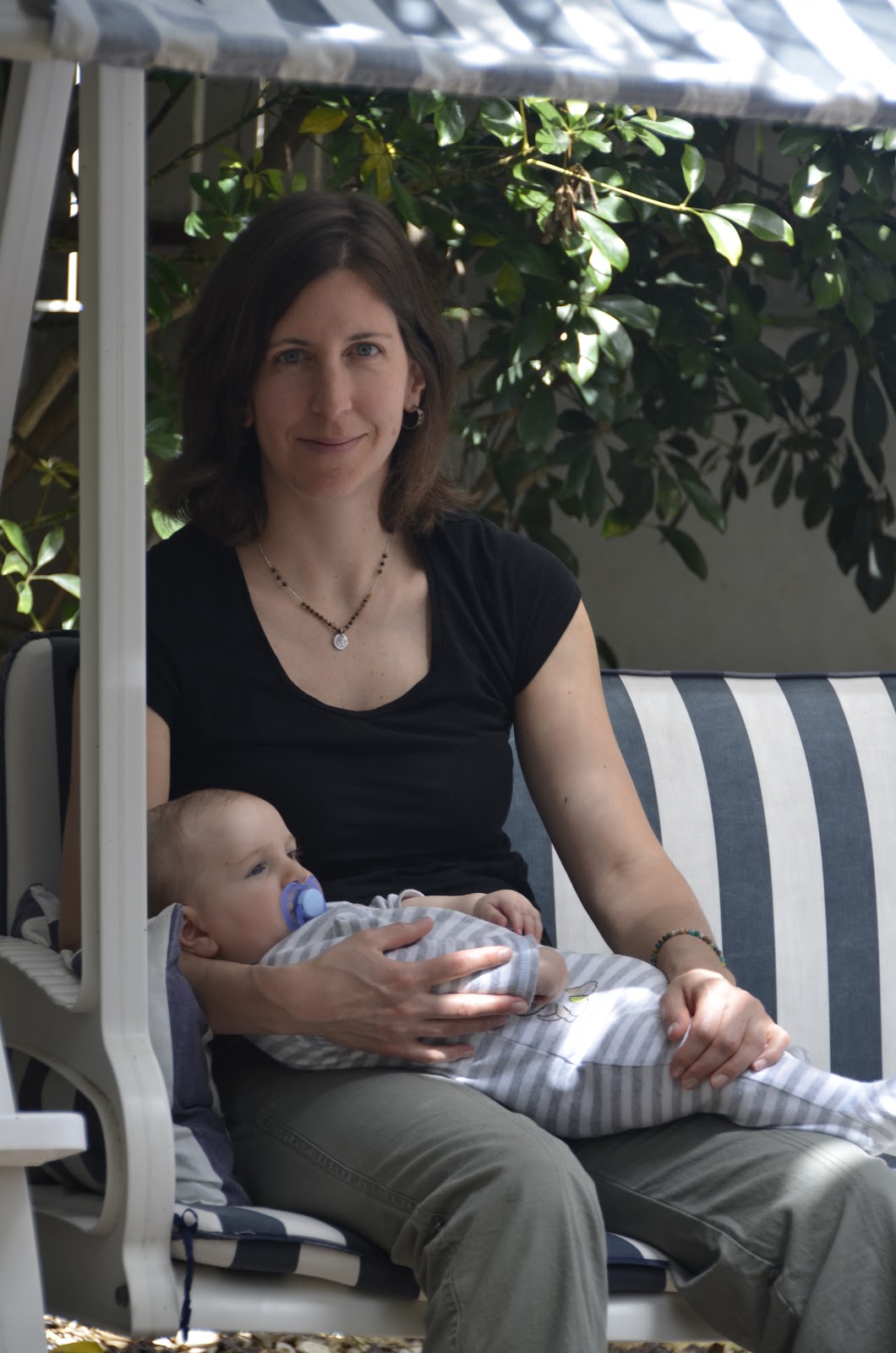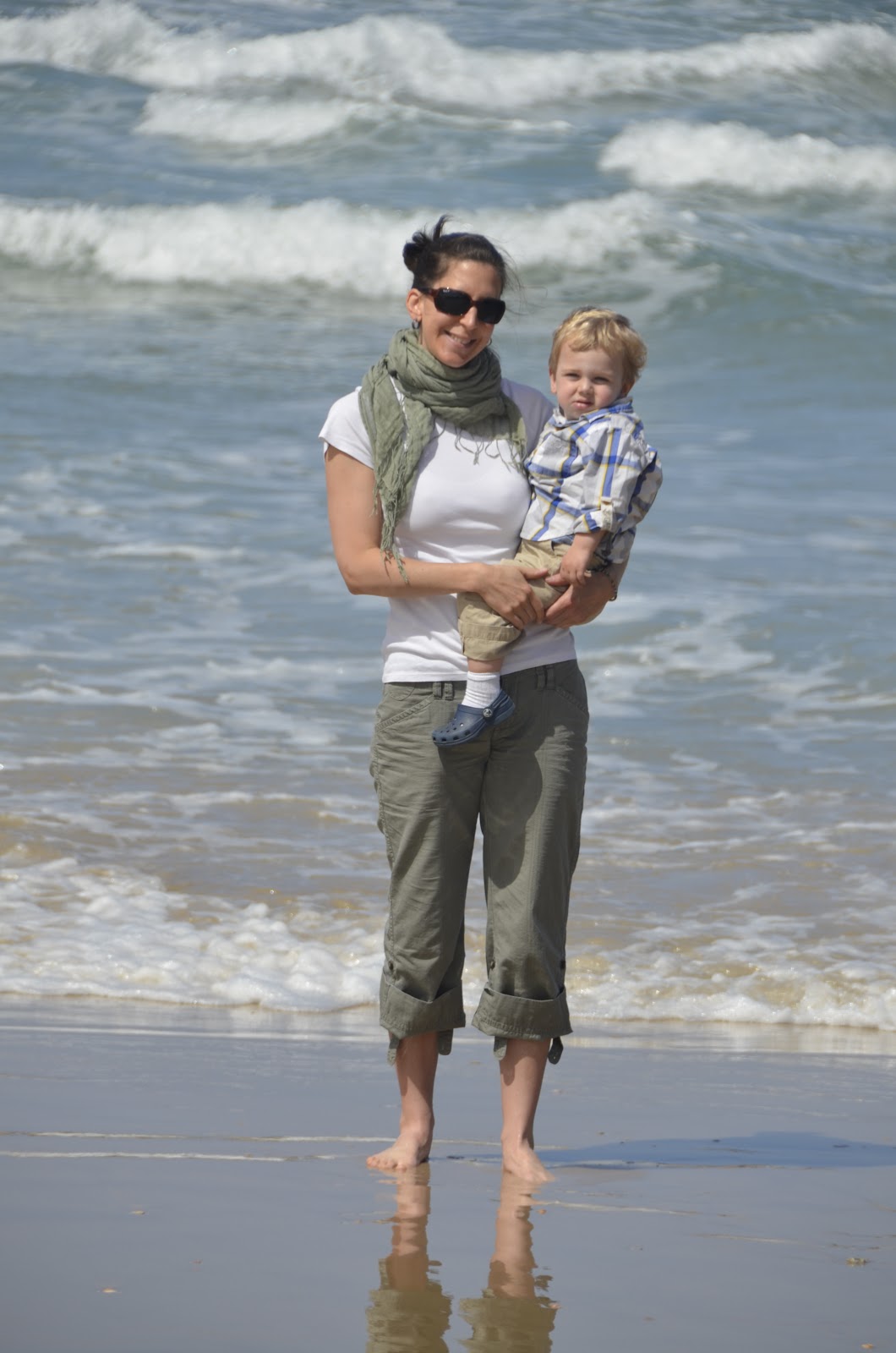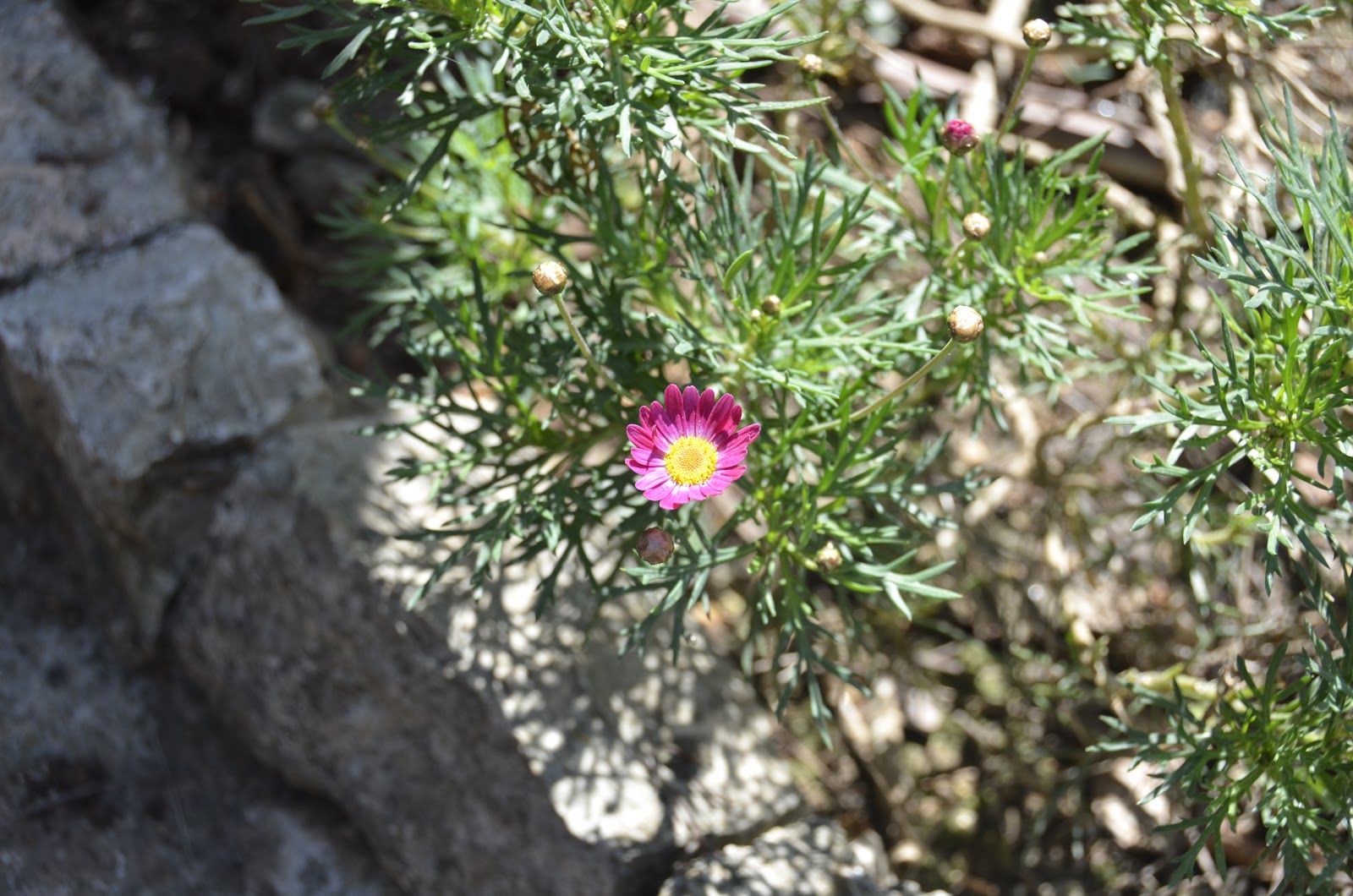Eric and I had been a little wary of making this trip because to get to the church from this entrance, you need to travel through the shuk (or suq, depending on your preference), which is the vast open air Arab market in the Old City, made up of tight, labyrinthine stone passageways lined with shops set back into the ancient walls. We weren't sure how it would go wheeling the boys through the shuk -- which, like the rest of Israel, has a lot of hills as well as windy passages -- with a double stroller. Turns out it wasn't too bad. We only got off track once and had to carry the stroller up a long flight of stairs, but we figure it was good exercise! Otherwise, everything went well. Many of the staircases in the shuk have ramps that helped us get up and down the stairs -- we only had to make sure to get out of the way when one of the men pushing carts filled with everything from citrus fruit to window glass to propane tanks came up behind us!
In every way, traveling through the shuk is an incredible sensory experience. The passageways are tight, the walls high, and so there is not a lot of light; there are abrupt turns and intersections, so it's easy to get disoriented; the place is usually packed with tourists, pilgrims heading to the various religious sites, and residents -- including children who dart across the alleyways and hang out in their parents' shops. There are smells of produce and incense and garbage. Above the din of all our voices as we talk and move along the passages, you hear the conversations of the shop owners, loud music coming from the shops, and the shouts of the men pushing carts down the ramps. You can buy pretty much anything in the shuk. Shops are filled with everything from pastries to spices to produce to meat; stores stock shoes or workout clothes or belly dancing outfits or modest religious garb; we passed doorways full of cheap toys, toothbrushes, scarves, and religious garments; shelves stacked with undergarments and appliances, upholstery and maps. It goes on and on and on; it's hard to imagine how each of these tiny stores stay in business, but somehow, each doorway is fully stocked.
We made our way through the shuk and passed through a few more streets on our way to the Church. During our walk, we traveled a short section of the Via Dolorosa, which follows the path Jesus walked as he carried his cross to his death. Nine of the 14 stations of the cross are on the Via Dolorosa, and the last 5 are in the Church of the Holy Sepulchre itself.
When we arrived at the Church, the courtyard was, not surprisingly, packed with tourists eager to go inside this sacred site.
The Church of the Holy Sepulchre is built on the site where many believe Jesus was crucified (also called Cavalry or Golgotha). The building is actually a complex of churches and sanctuaries sacred to many different religious groups, including the Roman Catholic, Eastern Orthodox and Armenian Apostolic churches. Because many religious sects must share this sprawling, sacred building, the church fuctions according to a very old and complex set of rules which govern the common areas and sacred spaces. One family has held the keys to the church's front door for generations. Fights have broken out among members of the religious sects over such small greivances as moving a chair; and a ladder made of cedar has been left leaning by one of the upper-floor windows since 1747 because no agreement can be reached as to how and where to move it. Like so many sacred places in this city, in the Church of the Holy Sepulchre, it seems inevitable that along with worship comes conflict.
If you go in the entrance and take a sharp right, you can go up a steep staircase to view a stone under glass; this is where many believe Jesus's cross was placed. If you go straight when you enter the main doorway, directly in front of you is a huge slab of stone placed where many believe Jesus's body was washed after he died. You'll see pilgrim after pilgrim come and kneel by the stone, touching the holy water that covers it. Some kiss the stone, others lay their cheek upon it, and almost everyone takes out an icon, cross, set of rosary beads or a any personal item you can imagine (postcards, jewelry, scarves, hats) and rubs them in the holy water. Today, there was barely any water left on the damp stone, but people knelt and hoped for blessings, regardless. Alexander touched the stone, and then headed off, dancing to the organ music from the service that was happening during our visit. Because of the crowds and the mass, we couldn't easily move through the entire church today, but it was exciting just to be there at all.
After our trip to the church, we made our way back out through the shuk and the Damascus gate, then up Jaffa Street to a vegetarian and vegan restaurant we discovered when we were here five years ago. We had a great lunch outside, and for dessert, stopped for more of our favorite juice up on Ben Yehuda Street. We didn't get back home until nearly 3 o'clock -- way past the boys' nap time -- but we all took late-afternoon naps before dinner. All in all, it was a wonderful day. Happy Easter!





















































